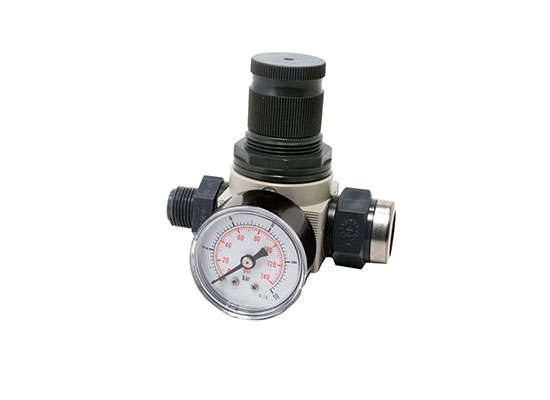Feb 08, 2025
A pressure regulator in a plumbing system controls the water pressure entering the system, ensuring it remains at a consistent and safe level.
It reduces high incoming water pressure from the main supply line to a more suitable level for household or industrial use.
This helps prevent damage to pipes, valves, and appliances due to excessive pressure.
It also ensures efficient operation and extends the lifespan of plumbing components by maintaining optimal water pressure for the system.

◆Prevents Damage to Plumbing Components The most immediate safety concern with high water pressure is the potential for damage.
Excessive pressure can cause pipes to burst, fixtures to leak, and appliances to malfunction.
Pressure regulator safety ensures that these risks are minimized by keeping the pressure at a manageable level.
◆Protects Water Appliances Many household appliances, such as water heaters, dishwashers, and washing machines, are designed to function optimally within a specific pressure range.
A malfunctioning pressure regulator or an overly high pressure supply can lead to inefficient operation, increased wear and tear, and even costly repairs or replacements.
By ensuring pressure regulator safety, you help extend the lifespan of these valuable appliances.
◆Ensures Consistent Water Flow A well-maintained pressure regulator keeps the water flow steady and uniform.
This prevents sudden fluctuations in water pressure that can disrupt daily activities, such as showering, cooking, or washing dishes.
A stable pressure level also ensures that faucets, sprinkler systems, and other water-based systems work efficiently.
◆Reduces the Risk of Leaks High pressure puts strain on pipes, valves, and connections, which can eventually lead to leaks.
By controlling pressure with a regulator, you can reduce the likelihood of these costly and potentially hazardous issues.
Leaks not only waste water but can also cause water damage to your property.
The lifespan of a pressure regulatorvalve largely depends on the system's usage, maintenance, and the quality of the valve itself.
On average, a pressure regulator valve can last between 5 to 10 years with proper care and regular maintenance.
However, if you notice signs such as inconsistent pressure, leaks, or difficulty adjusting the pressure, it may be time to replace the valve sooner.
Routine inspections and maintenance can help identify early signs of wear, allowing you to replace the valve before it causes damage to the system.
For precise guidance on when to replace your pressure regulator, feel free to reach out to Fokca.
Our expert team is always ready to provide tailored solutions and help ensure the longevity of your system.
The cost to replace a pressure regulator valve can vary based on factors such as the type of system and the brand of the valve.
For an accurate estimate, it's best to contact us at Fokca, where we can provide more specific details based on your needs.
As a professional supplier, we're happy to assist you in finding the right solution for your system.
You May Interest In
FOKCA ©1998-2025 All Rights Reserved Sitemap